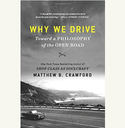The human family, it might be said, found its natural place in the pre-industrial home. For the vast majority of the human race, and over hundreds of generations, workplace and home were united. On a peasant – or family – farm, in an artisan’s or merchant’s shop, in a fisherman’s cottage, or in a nomad’s tent, men and women worked together to advance and sustain their small enterprises. Taking advantage of each other’s talents and strength, they crafted a natural complementarity. In these places, children and the aged usually found useful tasks as well, so completing the home economy.
Such homes witnessed little, if any, technological change. The daily life within a normal eighteenth-century European home differed little from the home life experienced by the Holy Family in first-century Palestine or by the agrarian families found in Homer’s Greece. Such households strove for a meaningful self-sufficiency. They wove their own cloth and sewed their own garments. They raised and preserved their own food. They crafted their own furniture and built their own shelters. Again, for the vast majority, home life and economic life were united.
The Industrial Revolution came when technological innovations in machine tools were harnessed to centralized power sources: flowing water and steam engines. Among the innovators, a new mindset was involved as well, a relentless tinkering which launched the limitless quest for improvement of the machines.
The emergence of modern factories – first in England, then on the Continent and North America – shattered the ancient regime of the home economy. Most directly, households were emptied of their able-bodied residents: the men going to one kind of factory; the women to another; the older children perhaps to a third. Most workers faced ten to twelve hours of factory labor per day, six days a week. New problems emerged: Who would care for infants and small children? Who would care for the elderly? Then, as now, there were no clear and good answers.
By definition, industrialization also meant the rapid dismantling of home economies, as cheap factory goods replaced the products and crafts which had defined functional households. The process began with spinning and weaving; yet it was soon apparent that it would have no end, until homes had been stripped of all productive tasks. The material base of the natural family disappeared, to be replaced by the bric-a-brac of a consumer economy.
After rough early decades, when dirty and dismal factories were populated by dirty and bewildered workers, living standards did begin to rise. Relying on an ever more elaborate division of labor and new spurts of technological innovation, the industrial process produced a staggering array of consumer goods, as substitutes for what families had once provided themselves.
From the very beginning, there was deep unease over the effects of these changes on domestic life. In Britain, Parliamentary inquiries told horrific tales of abandoned children and other signs of social disorder. William Wilberforce and his Clapham Sect abandoned London to raise their children together in the country, so inventing both the modern suburb and the daily commute. By the mid-nineteenth century, the English middle class settled into the model of the Victorian home. The men were irretrievably lost to the world of industry and commerce. However, the women – commonly aided by several servant girls – would devote themselves to building Christian homes for the nurture of children. By the century’s end, even working class leaders in Britain, Germany, and North America would adopt a similar goal, demanding a “living family wage” so that a male worker could support a full-time mother and their children in dignity.
Feminists, however, insisted that such a model should not, and would not, survive. The most prescient of these was Charlotte Perkins Gilman. Her 1898 book, Women and Economics, showed how technological advances and the laws of capitalism had already stripped homes of most of their functions. No one any longer dipped their own candles or made their own soap or spun their own wool. Indeed, by her time, the tasks within the home had already been reduced to only three: cooking, cleaning, and early child-care. However, the laws of economics now slated these for extinction, as well. She proceeded to lay out business plans, of a sort, for the fast-food industry (where people in kitchenless homes “prefer to go to their food” and pick it up at the windows of industrial kitchens), professional cleaners (like the Merry Maids), and commercial day-care centers (with infants taken off “the trembling knees of the young, untrained mother” and turned over to trained nurses). The home would cease to be “a workshop or a museum,” becoming instead a “place of love and privacy” for “pure, strong, beautiful [and equally employed] men and women.”
The twentieth century witnessed several attempts to reconcile technology and the home, in order to rebuild strong households. The most ambitious of these was the Home Economics Movement. Formally launched in the United States in 1899, this sought to pull the private household into the new world of technology and efficiency. As founding theorist Ellen Richards explained, “Home Economics stands for: The ideal home life of today unhampered by the traditions of the past.” Rejecting Gilman’s approach as well, this movement held that the housewife could be retrained, and saved. The home economists argued that their field would be “constantly stimulated by research” and they gave attention to the efficient use of new household appliances.
Over time, however, the discipline turned away from retraining young women in productive tasks such as cooking and sewing, focusing instead on educated consumption. This actually marked the thorough merger of the home sphere with the industrial sphere, with the retooling of the homemaker as a purchasing agent. Instead of rescuing women’s distinctive and vital tasks in the household, the home economists also dismissed them as irrelevant. Popular author Christine Frederick created the career of “household engineer” through books such as Selling Mrs Consumer and Household Engineering: Scientific Management in the Home. She vigorously endorsed Taylorism, the managerial principles then favored by progressive corporations, and she tried to translate “time-motion studies” and “one best way” for use in household tasks. In practice, however, home economists succeeded only in negotiating a final surrender of the private home to the industrial sector and its technological imperative. Under new assault by feminists of the Gilman-sort, the discipline dissolved in the 1970s and 80s.
An alternate approach to reconciling technology and the home was the Homesteading Movement of the 1930s. Examples of this “back to the land” approach could be found in England, particularly among the more enthusiastic Distributists who imbibed the work of G.K. Chesterton and Hilaire Belloc. In the United States, the leading prophet was Ralph Borsodi. In the midst of a successful career as an advertising executive on New York’s Madison Avenue, Borsodi turned with vengeance on the capitalist consumerism he had helped to create. In best-selling books such as This Ugly Civilization and Retreat from the City, he called for the use of modern technology to reverse the industrial revolution. Borsodi argued that new technologies had eliminated the efficiency advantages formerly held by the factories. Specifically, the small electric motor tied to the electrical grid and the compact internal combustion engine had decentralized productive power. Home workshops and small companies not only could now compete with big industries; unburdened by corporate bureaucracies and overhead, they often enjoyed an efficiency advantage. As Borsodi summarized, “The huge factory is a steam-age relic rendered obsolete by the electrical age,” yet kept alive by cartels, patents, and other state favors.
In short, technological advances now allowed families to begin again “an adventure in home production,” rooted in “true organic homesteads… organized to function not only biologically and socially but also economically.” Gardens, chicken coops, a few cows and pigs, carpentry shops, loom rooms, and modern electrical tools: all were necessary in real family homes. When fully engaged in modern home production, the housewife would save more of her husband’s earning than she could earn in the industrial sector. In 1933, Borsodi founded his School of Living, which would conduct the research to show “the scientific validity of decentralization” and retrain currently helpless city dwellers in the skills needed for a new agrarian order. His Craft Division taught woodworking, furniture production, and home spinning and weaving (using a technologically advanced Borsodi Loom). The Homemaking Division applied small-scale tools to cooking, food preservation, and laundering. The Agricultural Division taught vegetable gardening and small animal care. The Building Division offered training in the construction of a home. Another taught the basics of founding and operating a home-based business.
Hundreds of young couples came for training and Borsodi Homesteads mushroomed across the land. His ideas gave direct inspiration to the Subsistence Homestead Program, a Federal initiative launched in 1933 as part of the New Deal. Instead of a suburban development, these projects linked a new home to about five acres of land laid out in village fashion, and normally provided training in gardening and animal husbandry. In 1939, a magazine co-edited by Borsodi, called Free America, sponsored an architectural contest to design “the owner-occupied home of the free man,” where “living and producing a livelihood are welded into an harmonious whole.” Designs submitted must treat “the family as the primary economic and social unit” and craft the home to utilize the latest technologies in gardening, animal care, and handcrafts. Over 500 entries arrived, most of them using “a distinctly modern style of architecture.” By 1941, about 400 Homestead communities in the Borsodi style had been built or launched.
Alas, these promising developments were washed away during that great centralizing event known as World War II. Factory production of the most massive sort gained new life; homesteading now seemed to be a sentimental distraction. Peace in 1945 also brought on a housing shortage, as returning GIs and their brides produced Marriage and Baby Booms. Cheap houses built quickly and squeezed into suburban housing tracts became the favored government approach.
Still, the burgeoning suburbs offered another opportunity to reconcile home and technological advance; or so some key opinion makers thought. Sociologists led by Talcott Parsons celebrated the disappearance of productive tasks in the home. As he saw it, technology had liberated women from such drab practices, allowing them to refocus exclusively on emotional relations with husbands and, secondarily, children. These “companionate” marriages, he thought, would be richer and more stable than those once held together by mere economic bonds.
Another enthusiast for the new suburban home was Henry Luce, founder of the publishing empire that included Time, Fortune, Sports Illustrated, andLife. The son of Presbyterian missionaries to China, he worried about the problem of Mammon. In a May 1945 planning document sent to his editors, Luce accurately predicted that America would soon enter a “super-colossal Adventure into Prosperity,” driven by pent-up demand and war-inspired technological advances. Fortune, he said, could make its contribution to responsible journalism by turning this adventure “into something which we shall not be ashamed to call Civilization.” With its massive weekly circulation, Life would tackle the crass materialism found in modern American advertising. The magazine’s Modern Living section, Luce said, would serve “as the nexus between the Editorial and the Advertising.” At a minimum, it must promote good taste in the purchase of gadgets and goods, for “just as there is a close connection between manners and morals, so there is a close connection between taste and spirit.” At its best, the magazine would guide Americans toward a family-centered consumption, as a key part of what he called the New America.
Whether as consequence or by coincidence, American consumption patterns during the great postwar economic boom of the 1940s and 1950s actually did center primarily on family life. Later investigations showed that household expenses focused almost exclusively on homes, home furnishings, clothing and toys for children, family cars, refrigerators, backyard barbeques, and the early televisions. This was not an age of conspicuous consumption, but one where it seemed that the gifts of technology had finally been reconciled with a reasonably strong family system.
This actually fragile world collapsed during the “Sixties” (more accurately, 1965-76), when a moral and sexual revolution freed not only Eros but also the fruits of technology. Companionate marriages liberated by technology from productive tasks and focused strictly on emotional needs proved to be weak. Divorce rates soared and retreats from both children and marriage began. American and European homes started to unravel again; and largely by coincidence the digital revolution began.
Looking ahead, there are reasons to feel optimistic about the relationship between home and technological advance. As with Ralph Borsodi in the 1920s and 30s, new devices hold the potential for a resurrection of the home economy. In his time, hope came from the small electrical and internal combustion engines. In our time, the amazing power of the home computer and the great commercial democracy of the internet make an array of small scale enterprises possible. Advances in medical technology, including the miniaturization of diagnostic devices, make feasible the return of doctors’ and dentists’ offices to homes. The potential for telecommuting remains great. 3-D printers could turn garages into mini-factories.
And yet, skepticism is in order. As the ruin of Borsodi’s dreams reminds us, promising advances toward economic decentralization are vulnerable to both great events (such as war or revolution) and the vested interests conspiring to hold on to their power. Moreover, Borsodi’s scheme actually presumed that future technological advance would be modest; yet he provided no mechanism that would slow future innovation. Nor can technology save us from varied disorders of the soul. Indeed, it is much more likely to encourage the deadly sins of greed, sloth, envy, lust, and gluttony. Examples of such “technologies” range from the flood of hard-core pornography to be found just two clicks away on Google to the “supersized” Big Mac.
Indeed, the only modern communities that have actually learned how to control technology are those which apply religious devotion and obedience to the task. While such separatist sects take many forms, the primary American example is the Old Order Amish. The secrets of the Amish are simple: “efficiency” is subordinated to the preservation of both the self-sufficient home economy and certain forms of human labor; the use of tools remains bound to the ideal of personal craft; and technological innovation is allowed only if it does no harm to the preservation of families and the religious community. Obedience to elders, in turn, makes bearable the psychological costs of renouncing the symbols and products of intensive consumerism and an extreme division of labor. Notably, with certain shifts in emphasis, the same principles have operated in largely the same manner within the historic and faithful Catholic religious orders.
The irony here is large: only a radical “separation from the world,” with eyes firmly fixed heavenward, gives sufficient power to individuals in homes and intentional communities to overcome the lures, appetites, and pressures of technological change and the full industrialization of human life. These folks alone are the masters, not the servants, of innovation.
Dr Allan C. Carlson is President of The Howard Center for Family, Religion & Society in Rockford, Illinois and founder and International Secretary of The World Congress of Families.



